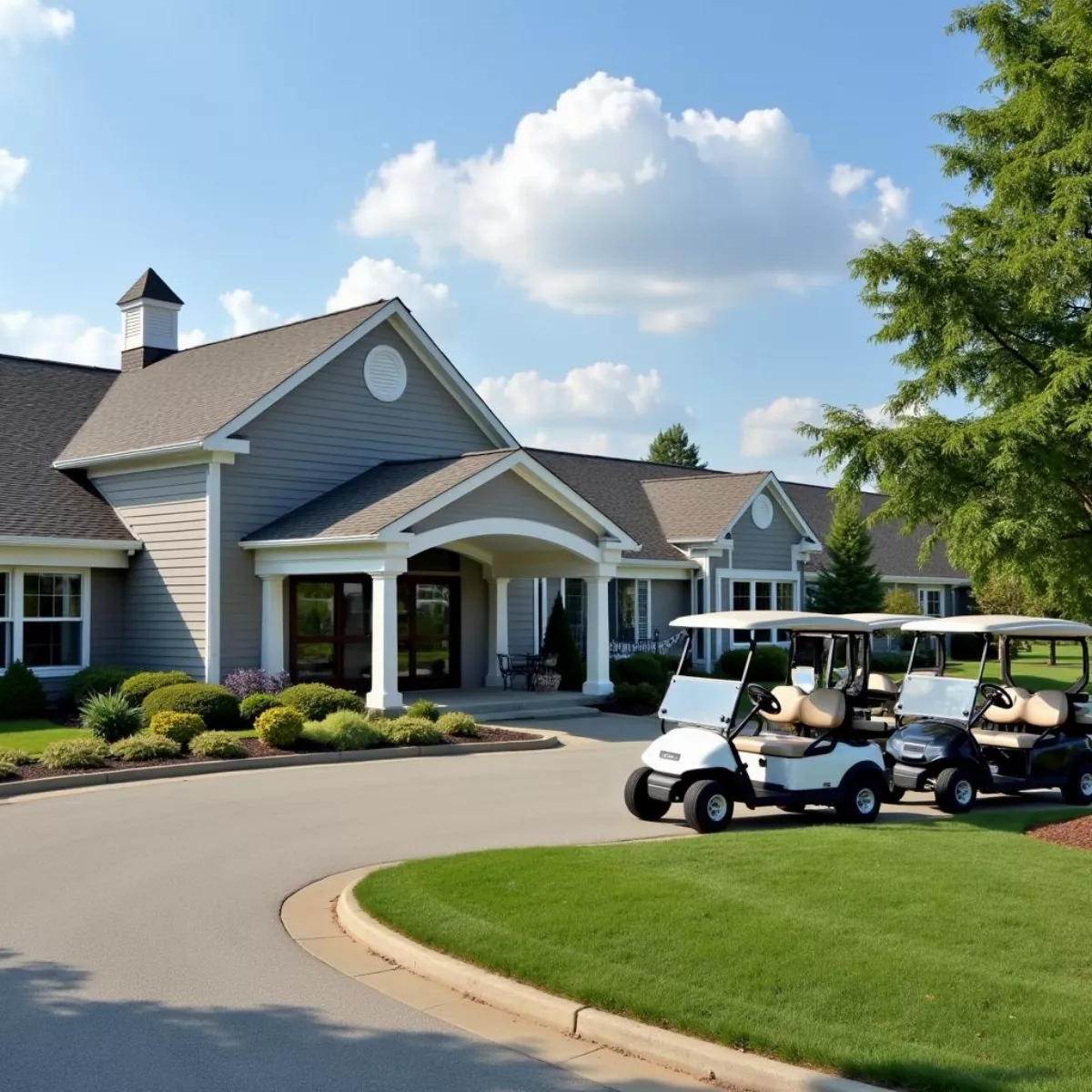Golf, a sport celebrated for its precision and elegance, offers a variety of playing experiences, including semi-private golf courses. But what does it mean for a golf course to be categorized as “semi-private”? If you’ve ever found yourself curious about this classification, you’re in the right place! In this article, we’ll explore what makes a golf course semi-private, the benefits, and the unique characteristics that differentiate it from other types of courses.
What is a Semi-Private Golf Course?
A semi-private golf course is a type of golf facility that combines elements of both public and private courses. These courses typically allow a set number of memberships while still permitting the general public to book tee times. This hybrid structure aims to create a more inclusive golfing experience while offering some exclusivity.
Key Characteristics of Semi-Private Golf Courses:
- Membership Options: Members usually enjoy special privileges such as lower green fees and early booking times.
- Public Access: Non-members can generally play the course, but they may face higher rates or restricted times.
- Quality Amenities: Semi-private courses often invest in quality facilities, including well-maintained fairways, advanced practice areas, and clubhouses.
Pros and Cons of Playing at a Semi-Private Golf Course
Every golf course has its perks and drawbacks. Understanding the pros and cons of semi-private golf courses can help you make an informed choice when deciding where to tee off.
Pros
- Affordability: Membership costs are often lower than private courses, making them accessible to more players.
- Flexibility: Since they allow public play, it’s easier for friends and family to join you without needing an exclusive membership.
- Quality Experience: Many semi-private courses offer top-notch conditions and amenities akin to private clubs.
Cons
- Availability: During peak times, it can be challenging to secure a tee time, especially for non-members.
- Less Exclusivity: For those who prefer a more private experience, semi-private courses can feel crowded.
- Variable Experience: The quality of public play can differ significantly based on the group you play with.
The Appeal of Semi-Private Golf Courses
So why do golfers gravitate toward semi-private courses? The appeal often lies in the unique mix of community and exclusivity.
- Community Spirit: Being both public and membership-based, these courses often foster a vibrant community of golfers who appreciate social gatherings and tournaments.
- Playing Conditions: Because they rely on both member fees and public green fees, semi-private courses can maintain high playing conditions without the high membership costs.
- Event Hosting: Many semi-private courses are equipped to host events, family gatherings, and corporate outings—adding to their communal feel.
 Aerial View of a Golf Course with Lush Green Fairways and Water Features
Aerial View of a Golf Course with Lush Green Fairways and Water Features
How to Choose the Right Semi-Private Golf Course
Finding the right semi-private golf course can be an enjoyable experience. Here’s a comprehensive guide on how to make your choice:
- Determine Your Budget: Understand what you can afford for memberships or green fees.
- Research Course Conditions: Look for reviews regarding course maintenance and difficulty.
- Consider Location: Proximity can dramatically impact your frequency of visits.
- Check Amenities: Look for additional services such as clubhouses, dining options, and pro shops.
- Inquire About Membership Levels: Some courses have varying levels of membership that offer different benefits.
Table: Comparing Golf Course Types
| Feature | Private Course | Public Course | Semi-Private Course |
|---|---|---|---|
| Membership Required | Yes | No | Yes (but public access) |
| Fees | High | Low | Moderate to High |
| Availability | Limited | Open to All | Limited for Non-Members |
| Community Engagement | Exclusive | Variable | Community Oriented |
| Course Maintenance | High | Variable | High |
 Exterior of a Golf Course Clubhouse with Golf Carts Parked Nearby
Exterior of a Golf Course Clubhouse with Golf Carts Parked Nearby
Best Practices for Playing a Semi-Private Course
When you decide to play at a semi-private golf course, here are some recommended practices to enhance your experience:
- Book In Advance: Make tee time reservations early, especially on weekends.
- Arrive Early: Give yourself time to warm up on the range and check in without feeling rushed.
- Respect Course Etiquette: Abide by all course rules and respect other golfers to maintain a friendly environment.
- Participate in Events: Take part in tournaments and social events to fully experience the community aspect.
- Engage with Staff: Building relationships with club staff can enhance your visit and sometimes provide additional perks.
Conclusion
Semi-private golf courses provide a fantastic opportunity to enjoy golf in a community-oriented setting at an affordable price. They’re designed to marry the benefits of exclusivity with the openness of public play—catering to various golfers’ needs.
As you consider your golfing options, remember the many factors affecting your choice and take advantage of the variety that semi-private courses offer!
Key Takeaways
- Semi-private golf courses blend private membership benefits with public accessibility.
- They provide quality experiences while maintaining lower costs than private courses.
- Consider factors such as amenities, location, and your budget when choosing a course.
- Engage in the community spirit and follow best practices to enhance your experience.
Frequently Asked Questions (FAQ)
1. What is a ‘semi-private golf course’?
A semi-private golf course allows both members and the public to play, combining aspects of both public and private courses.
2. Are membership fees required at semi-private courses?
Yes, there are typically costs associated with memberships, but they usually offer lower fees than fully private courses.
3. Can anyone play at a semi-private course?
Yes, the general public can usually play, but rates and tee time availability may vary.
4. What amenities should I expect at a semi-private course?
Amenities vary, but many offer well-maintained greens, practice areas, clubhouses, and dining options.
5. How do I make a reservation at a semi-private course?
Reservations can typically be made through the course’s website or by calling the clubhouse directly.
6. What are typical green fees at semi-private courses?
Green fees can range widely; check individual courses for specific pricing.
7. Why are semi-private courses a good choice for casual golfers?
They offer access to quality facilities without the commitment or cost of a private course.
8. Can I host a tournament at a semi-private course?
Many semi-private courses are equipped to host tournaments and events, but it’s best to contact the course directly for more information.
9. How crowded do semi-private courses tend to be?
Crowds can vary based on the day and time, so it’s best to book tee times during non-peak hours for a more relaxed experience.
10. What should I wear to a semi-private golf course?
Most semi-private courses maintain a dress code, so it is advisable to wear collared shirts and appropriate golf shoes.
 Two Golfers on the Green Putting with Golf Bags and Flagstick Visible
Two Golfers on the Green Putting with Golf Bags and Flagstick Visible
By understanding the ins and outs of semi-private golf courses, you can enhance your golfing experience and make the most of your time on the course. Happy golfing!

